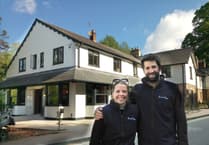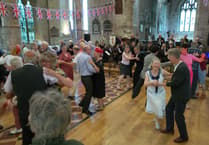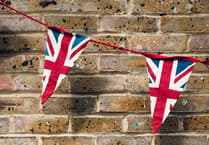Rotherwas Chapel which has an intriguing history is now in the safe hands of English Heritage and the little, serene church stands alone and beautiful almost next door to the county rubbish tip.
On Monday, June 20th the chapel will be open to all from 5pm until 7pm, followed at 7.30pm by a meeting at the nearby new Herefordshire Archives and Records Centre (HARC) to establish the Friends of the Rotherwas Chapel, who will look after the inside of the chapel, with the help and advice of EH.
The Friends will arrange events and open days - mainly in the summer as there is only one electric plug, no water, and no naked flames, such as candles, are allowed. After over 100 years, there will be a Mass Service celebrating the Feast of the Assumption (for all faiths and agnostics too) on Monday evening, August 15th, and the Chapel will be open to all in the afternoon Saturday, September 10th as part of the national Heritage Open Days, and for a torchlight carol service at Christmastide.
You are invited to come and visit this unique local treasure. The Dinedor Heritage Group have produced a trail and map for you to follow around Rotherwas and Dinedor with its history from the neolithic Rotherwas Ribbon to the modern HARC.
The Bodenhams and Rotherwas
The history of Rotherwas house and Chapel is fascinating. In the late 19th century, Charles Thomas Bodenham inherited Rotherwas House, pleasure gardens, farms and smallholdings, cottages and chapel. He became involved in several disastrous business ventures - taking over the Horse Towing Path Company and was on the board of the City and County Bank.
He tried to save the Bank by mortgaging Rotherwas estate - and so burdened his family with huge debts. When he died, his son Charles and wife Irena, daughter of Polish Count Dzierzykras Morawski inherited the indebted Rotherwas.
After Irena’s death, the estate passed to her cousin, Count Louis Pormain Bodenham Lubienski. Louis, his wife and three sons moved to and lived at Bullingham Manor, and Rotherwas House was let to tenants.
The House was damaged by fire in 1907, and the Count died in 1909. Subsequently, the whole estate of over 2,500 acres and everything, including the shooting and fishing rights, were sold.
London antique dealers even sold the wall panelling to the US, where they are lining the Rotherwas Room at Amherst College, Massachusetts.
The new owner intended to knock down the chapel and in 1913 demolition work began; this meant that the bodies of the Bodenhams and others who had been buried in and around the chapel had to be moved.
Rotherwas Chapel
Rotherwas chapel nave dates from the 14th century; the chapel was rebuilt in the 16th century, possibly as a Protestant church, but later the Bodenhams returned to their Roman Catholic faith - although there is no record of the chapel ever being consecrated.
The clock tower was added in 17th century, and a sanctuary, sacristy, side chapel, fine stained glass windows, altar and decorations were added in the 19th century - mostly by Countess Irena, who was the last Bodenham to be buried here in 1892.
The last service was held in 1914, and then Rotherwas House was taken over by the Ministry of Defense, and the chapel used as a potato store and pigsty.
Forty People reburied
A report in a local newspaper of January 1913 describes the macabre disinterment of nearly 40 peoples’ remains - those who had died between 1691 and 1892, and were reburied in an overgrown patch several 100 yards away, where a few crooked memorial stones hide amongst the brambles and fallen trees.
The newspaper report stated:?“The little chapel is now a veritable charnel house - an apartment for dry bones. The stone floor is up, and in front of the altar is a deep excavation - one of many that has yielded up long-buried remains, including those of Irena Maria de la Barre Bodenham.”
By Margot Miller




